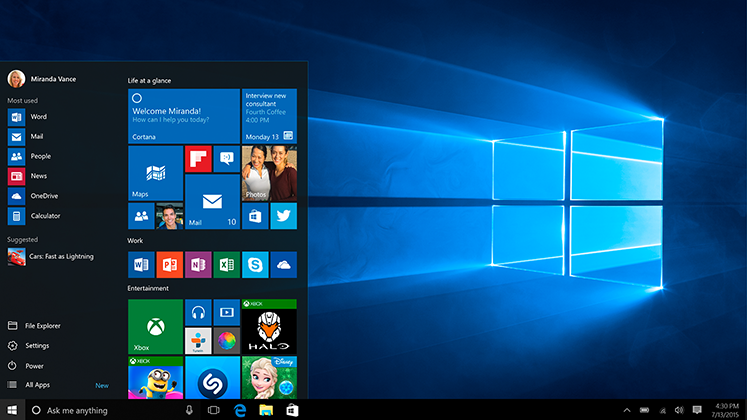Windows 10 free upgrade ends July 29, will cost $119 after
Act now, don't delay.

When Microsoft launched Windows 10 last summer, it made an offer that millions of Windows users couldn’t refuse—upgrade from Windows 7 or Windows 8/8.1 within the first year and it will be free. In case you thought Microsoft might extend or otherwise remove the deadline to upgrade at no cost, the Redmond outfit made clear that’s not going to happen.
“The free upgrade offer to Windows 10 was a first for Microsoft, helping people upgrade faster than ever before. And time is running out. The free upgrade offer will end on July 29 and we want to make sure you don’t miss out. After July 29th, you’ll be able to continue to get Windows 10 on a new device, or purchase a full version of Windows 10 Home for $119,” Yusuf Mehdi, corporate vice president of Microsoft’s Windows and Devices Group, stated in a blog post.
There’s still plenty of time to upgrade at no cost, if that’s what you want to do, but once the deadline comes and goes, you’ll either have to purchase a license or buy a new PC with Windows 10 pre-installed.
The other lingering question is whether or not Microsoft will ever charge for future upgrades and updates to Windows 10. Conceivably Microsoft could decide to roll out a major update that turns Windows 10 into a subscription service, charging customers a fee to continue receiving important security updates and feature upgrades. However, it doesn’t sound like that’s the plan. In an accompanying YouTube video, Microsoft marketing manager Bryan Roper says upgrading to Windows 10 means that all future updates are yours for the taking.
“If you upgrade today, not only will you get your hands on a ton of new awesome stuff that will work as soon as you upgrade, upgrading now means you’re going to get all future updates for free, like the Anniversary update that’s coming soon,” Roper says.
Microsoft also announced that Windows 10 is now running on 300 million active devices, up from 270 million at the end of March and 200 million at the beginning of the year. It’s important to note that these are active installs, so for the most part the new figure doesn’t include upgrades to Windows 10 that were later uninstalled if a user chose to roll back to a previous version of Windows.
That figure also puts Microsoft nearly a third of a way to its goal of reaching 1 billion Windows 10 installs within the first 2-3 years of release. The challenge it will face once the free upgrade period expires is maintaining the rate of adoption that got it to this point.
Keep up to date with the most important stories and the best deals, as picked by the PC Gamer team.
Paul has been playing PC games and raking his knuckles on computer hardware since the Commodore 64. He does not have any tattoos, but thinks it would be cool to get one that reads LOAD"*",8,1. In his off time, he rides motorcycles and wrestles alligators (only one of those is true).


